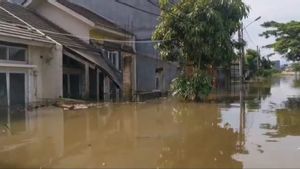JAKARTA - The Meteorology, Climatology and Geophysics Agency (BMKG) appealed to residents to be aware of the potential for extreme weather over the next week during the 2023 Christmas and 2024 New Year holidays.
"Heavy rain and potential hot temperatures can still occur in parts of Indonesia," said BMKG Deputy for Meteorology Guswanto in a statement in Jakarta, quoted from Antara, Saturday, December 23. Guswanto explained that the potential for heavy rain and hot hot temperatures was triggered by several atmospheric dynamics phenomena. Wind circulation in the South China Sea (LCS) still inhibits the flow of wet air mass from Asia to the territory of Indonesia, so that the potential for heavy rain is still concentrated in the islands of Sumatra and West Kalimantan. The circulation of the wind in the LCS also indirectly has an impact on the lack of potential cloud growth in the southern region of the equator. The condition is also strengthened by the presence of a dry phase of the Madden Jullian Oscillation (MJO) phenomenon in parts of Indonesia, thus also triggering a lack of cloud cover during the day which results in a fairly hot and hot temperature condition with a temperature range of 35 to 37 degrees Celsius.
اقرأ أيضا:
The hot temperature conditions during the day are predicted to still occur for the next three days in parts of Java to Nusa Tenggara. Based on the analysis of the potential dynamics of the atmosphere above and the active signal of Rossby waves in the southern region of the equator in the next week, the potential for moderate to heavy rain on 23 December 2023 to 1 January 2024 can occur in parts of Aceh, North Sumatra, West Sumatra, Riau, Riau Islands, Riau, Jambi, Bengkulu, South Sumatra, Bangka Belitung Islands, Lampung, Banten, West Java, Central Java, West Kalimantan, Central Kalimantan, South Sulawesi and Papua. In addition to extreme weather, BMKG also conveyed information about volcanic dust that could potentially endanger aviation activity. The volcanic dust originates from Mount Marapi in West Sumatra, Mount Semeru in East Java, Mount Dukono and Mount Ibu in North Maluku, as well as Mount Lewotobi in East Nusa Tenggara.
The English, Chinese, Japanese, Arabic, and French versions are automatically generated by the AI. So there may still be inaccuracies in translating, please always see Indonesian as our main language. (system supported by DigitalSiber.id)
















